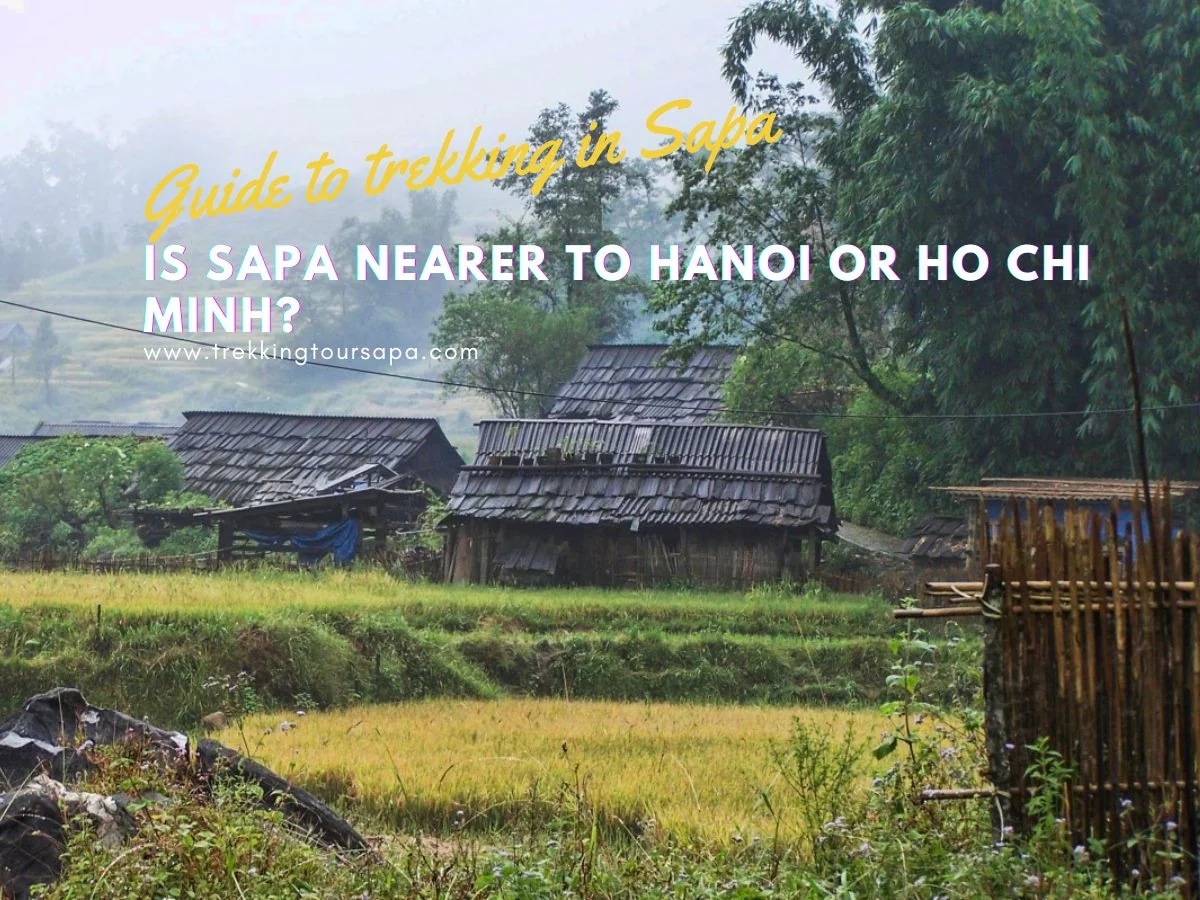Are you planning a trip to Vietnam and wondering which city is closer to the beautiful town of Sapa? The answer may surprise you. Many assume that Hanoi, the capital city in the north, is nearer due to its proximity on a map. However, other factors at play make Ho Chi Minh City a more accessible option.

As a freelance research writer with an interest in travel, I have delved deep into this topic to uncover the truth about Sapa‘s location relative to both major cities. Whether you’re looking for a quick weekend getaway or embarking on an extended journey through Vietnam, understanding which city is closer can help you plan your itinerary and enjoy your travels with greater ease and freedom.
So let’s dive in and explore whether Sapa is nearer to Hanoi or Ho Chi Minh!
Table of Contents
ToggleDistance Between Sapa And Hanoi
As the saying goes, ‘Not all who wander are lost.’ Such is the beauty of exploring a new place – it’s an adventure that allows you to discover and learn. For travelers seeking freedom and excitement, Vietnam is worth visiting. From bustling city life in Ho Chi Minh to the serene mountain views in Sapa, there’s something for everyone.
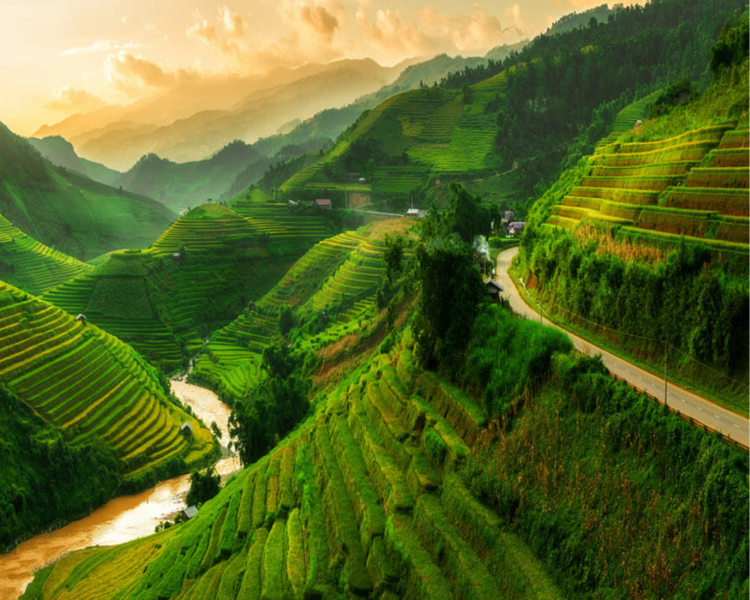
Located about 315 kilometers northwest of Hanoi, Sapa offers visitors a cooler climate compared to other parts of Vietnam. Its high altitude results in a pleasant temperature that ranges from 15-18°C throughout the year. Aside from its weather, Sapa also boasts cultural diversity as it serves as home to several ethnic groups such as Dao, Tay, and Giay. This makes it an ideal destination for those curious about different cultures and traditions.
With these unique features, traveling to Sapa from Hanoi guarantees an exciting experience full of surprises!
Distance Between Sapa And Ho Chi Minh City
Traveling by road, the distance between Sapa and Ho Chi Minh City is roughly 1,012km. On average, it takes around 15 hours to make the journey. Alternatively, flying between the two destinations is significantly faster, with the distance clocking in at just 640km and the flight time taking only 1.5 hours.
Travel Time
Are you planning a trip to Vietnam and wondering which city is closer to Sapa, Hanoi, or Ho Chi Minh City? Well, let’s talk about travel time. The distance between Sapa and Ho Chi Minh City is approximately 1,600 kilometers by air, while it’s only around 380 kilometers from Sapa to Hanoi. Thus, if you’re looking for a quicker route, then Hanoi would be the best option as it will take less time to reach there.
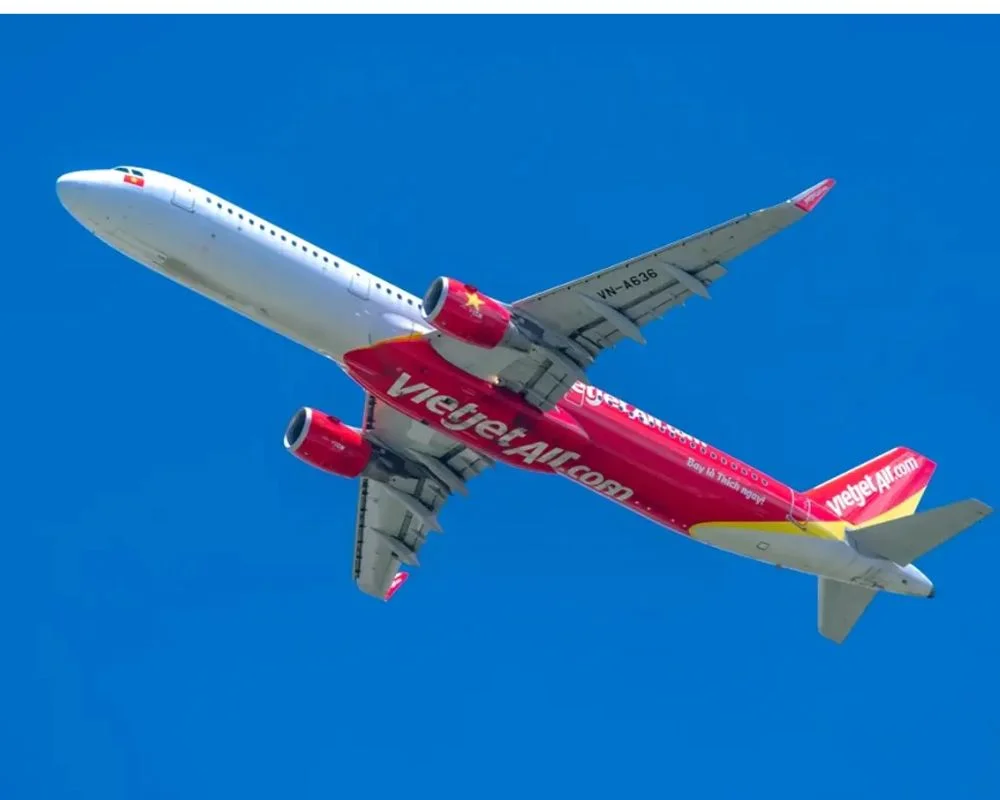
However, when it comes to cultural comparison and weather conditions, both cities have their unique charm. Hanoi offers an insight into traditional Vietnamese culture with its ancient temples and pagodas along with modern architecture. On the other hand, Ho Chi Minh City showcases the more contemporary side of Vietnam with its bustling nightlife and cosmopolitan vibe.
Regarding weather conditions, Hanoi has four seasons – spring (March-May), summer (June-August), autumn (September-November), and winter (December-February). It can get quite cold during winters with temperatures dropping below freezing point sometimes.
While in Ho Chi Minh City, the climate is tropical all year round with two main seasons – the rainy season (May-October) and the dry season (November-April).
In conclusion, although Hanoi may offer a shorter travel time compared to Ho Chi Minh City when visiting Sapa; choosing between these two vibrant cities ultimately depends on personal preferences regarding culture comparison and weather conditions.
Distance By Road
Now that we’ve talked about the distance between Sapa and Ho Chi Minh City by air, let’s consider the option of traveling by road. Hanoi to Sapa distance is around 320 kilometers, which takes approximately six hours by car or bus depending on road conditions.
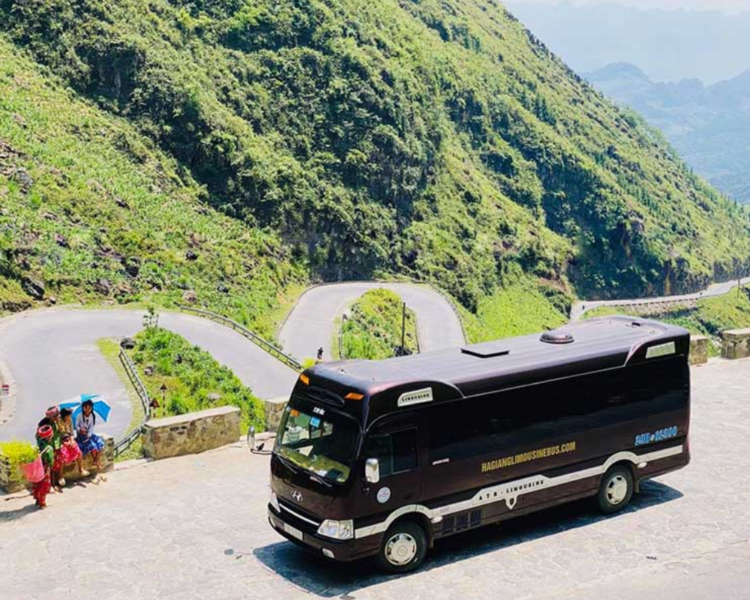
On the other hand, if you’re planning to travel from Sapa to Ho Chi Minh City by road, it would be a much longer journey as it involves covering a distance of over 1,800 kilometers. This could take up to two days with frequent stops along the way for rest and refreshments. It’s important to keep in mind your travel schedule while choosing between these options so that you can allocate enough time for your journey without feeling rushed.
Additionally, considering the condition of roads is crucial when traveling long distances as they affect both safety and comfort levels during transit.
Distance By Air
Now that we’ve explored the option of traveling by road from Sapa to Ho Chi Minh City, let’s consider the distance between these two destinations by air. While it may be a quicker alternative, weather conditions can play a significant role in flight delays or cancellations. However, if you’re short on time and prefer to skip long hours on the road, flying might be your best bet. Not only is it more convenient, but it also allows you to spend more time exploring cultural attractions at both ends of your journey.
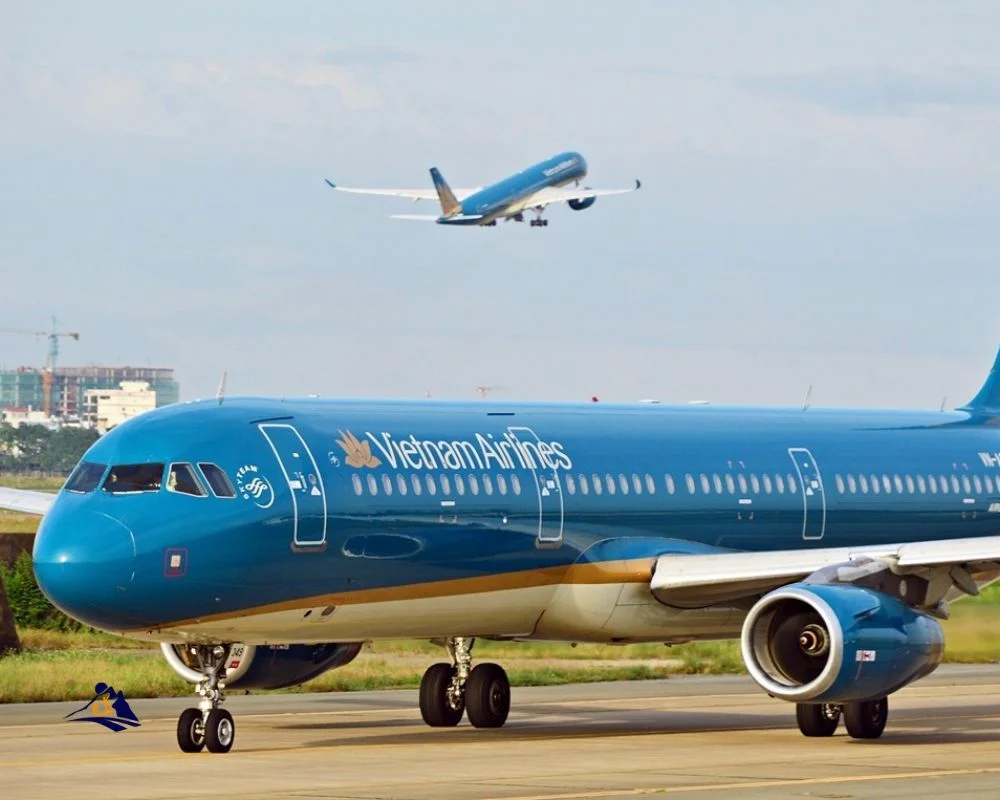
Keep in mind that while air travel is faster than driving, checking for any potential delays due to weather should always be part of your planning process.
Transportation Options From Hanoi To Sapa
If you’re looking to escape the hustle and bustle of Hanoi city life, Sapa is a great destination for a peaceful retreat. Located in Northern Vietnam, Sapa offers stunning views of rice fields that stretch as far as the eye can see. The town’s cultural attractions are also worth exploring, including traditional markets where you can buy handmade crafts from local tribes.
When planning your trip to Sapa, it’s important to consider weather conditions. Temperatures can drop significantly during winter months (December-February), so packing warm clothing is essential. However, if you prefer milder temperatures with occasional rainfall, visiting between March-May and September-November may be ideal for you.
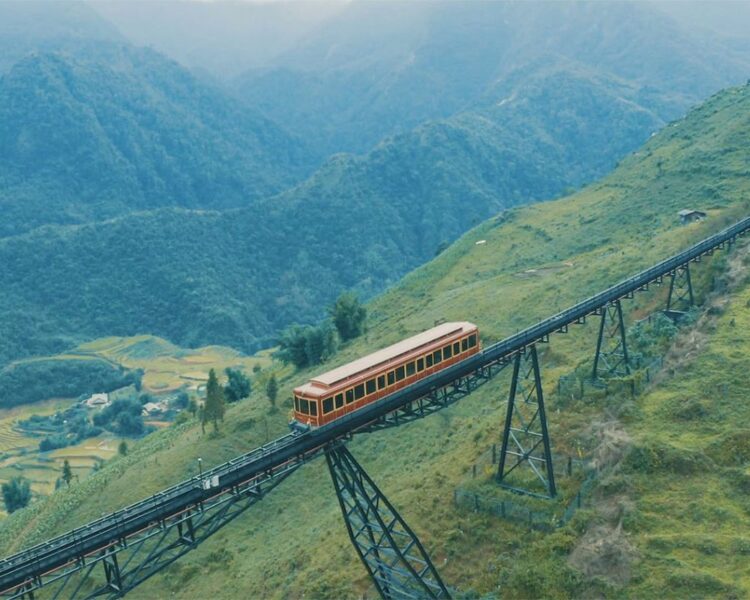
Despite unpredictable weather patterns, one thing is certain: Sapa’s natural beauty will leave an unforgettable impression on any traveler seeking adventure and tranquility. As for those coming from Ho Chi Minh City, getting to Sapa requires additional travel time compared to those departing from Hanoi. But don’t let that discourage you! There are various transportation options available such as planes, trains, or buses which offer scenic routes through mountainous regions en route to your final destination.
In the following section, we’ll explore these options more thoroughly so that you can choose what works best for your needs and budget while still enjoying all that this charming town has to offer.
Transportation Options From Ho Chi Minh City To Sapa
If you’re looking to get from Ho Chi Minh City to Sapa, there are a few transportation options available. The most popular choice is by flight, with daily direct flights leaving Tan Son Nhat International Airport in Ho Chi Minh City and landing at the Lao Cai Airport near Sapa. This option can be quite convenient for those who want to save time and have flexibility in their travel plans.

However, if you prefer a more scenic route, taking a train or bus may be a better fit for you. While it takes longer than flying, it’s also an opportunity to take in Vietnam’s beautiful countryside along the way. Regardless of which mode of transportation you choose, make sure to take safety precautions such as wearing a mask and practicing social distancing during your travels. Additionally, having some time flexibility can help alleviate any potential stress that comes with unexpected delays or changes in schedule.
- Consider booking tickets ahead of time for peace of mind.
- Research reputable airlines/bus companies/train stations beforehand.
- Pack light for ease of mobility.
- Bring snacks and drinks in case food options are limited on board.
- Check weather conditions before departing and pack accordingly to stay comfortable during the trip.
Cost Of Travel From Hanoi To Sapa
Have you ever dreamed of exploring Sapa? This charming town in the northwest region of Vietnam offers a unique experience for travelers seeking adventure and cultural immersion. From the breathtaking rice terraces to the vibrant hill tribe markets, there is so much to discover in this picturesque destination.

If you’re planning a trip from Hanoi to Sapa, here are some traveling tips to make your journey enjoyable and stress-free. First and foremost, consider taking an overnight train or bus to Sapa instead of driving yourself. The winding mountain roads can be treacherous, especially during rainy seasons, and public transportation allows you to sit back, relax, and enjoy the views. Additionally, pack warm clothing as temperatures can drop significantly in Sapa’s high-altitude climate. Finally, don’t forget to bring comfortable walking shoes as many attractions require hiking or trekking.
As for those coming from Ho Chi Minh City (HCMC), getting to Sapa requires more effort but is worth it! You have two options: take a flight directly into Hanoi then follow the aforementioned travel tips, or take a scenic 30-hour train ride from HCMC to Lao Cai station and then transfer by bus or taxi to Sapa.
While both methods have their pros and cons in terms of cost and convenience, they offer different experiences that cater to diverse traveler preferences. Regardless of which route you choose, we guarantee that your journey will be filled with unforgettable memories!
Cost Of Travel From Ho Chi Minh City To Sapa
Transportation to Sapa from Ho Chi Minh City is generally not too expensive, depending on the method of travel you choose. The cheapest option to consider is taking the train, which can cost as little as USD 20. However, accommodation costs in Sapa can be quite high, with prices ranging from USD 50 per night for budget-friendly options up to USD 200 per night for more luxurious accommodations.
Cost Of Transportation
Picture this: you’re in Ho Chi Minh City and want to journey to Sapa. One crucial aspect of your travel expenses is the cost of transportation. Luckily, there are a few affordable options available for travelers seeking cultural experiences while considering weather conditions.
Firstly, traveling by train from Hanoi to Lao Cai can be an economical option as it provides comfortable seating and overnight cabins with scenic views along the way. From Lao Cai, it’s a short bus ride to Sapa. However, keep in mind that trains may not always run on schedule due to inclement weather or other factors.
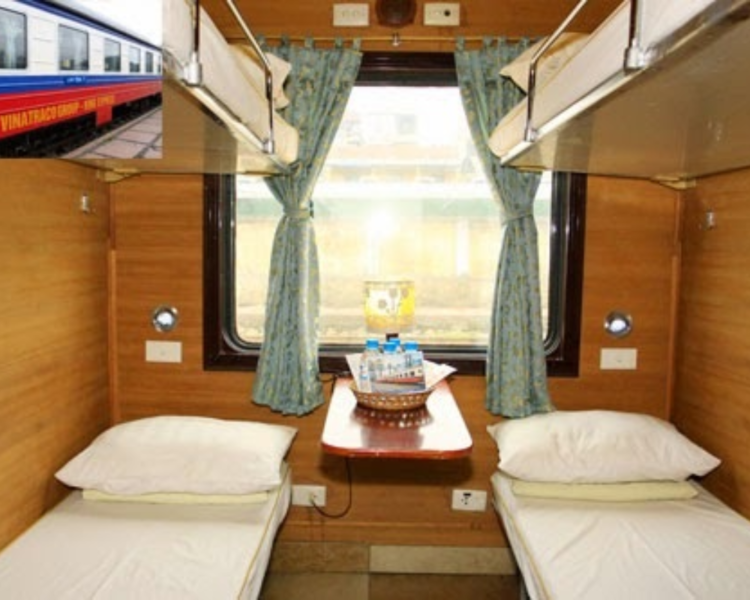
Alternatively, taking a sleeper bus directly from Ho Chi Minh City to Sapa may seem like a convenient choice but could be more expensive than expected. These buses tend to have higher rates during peak seasons and do not offer much legroom or luxury amenities.
Lastly, flying into Hanoi and then making your way up north via private car hire or shuttle service would be pricier yet quicker compared to other modes of transport mentioned earlier.
Sapa 1 Day Tours
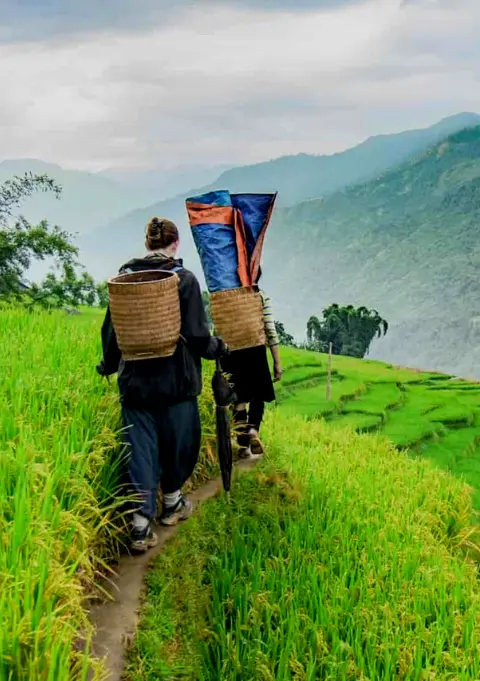
- 1 day experience
- Moderate to challenging
- Cultural immersion & active adventure
- Rice fields, valleys & villages
- Private tours
- Vegan-friendly
Sapa 2 Day Tours
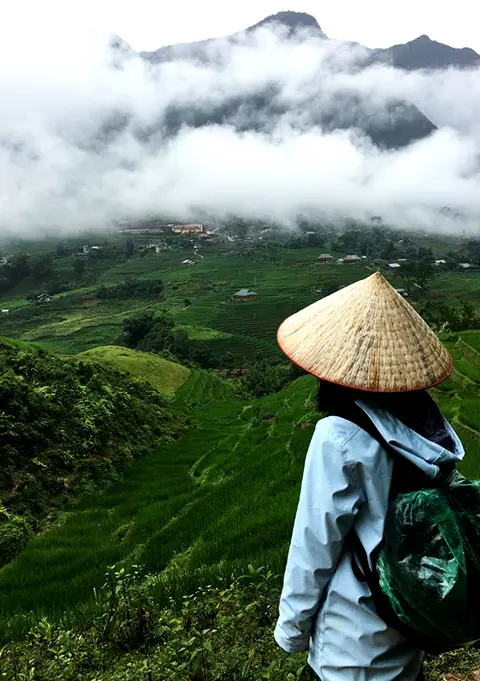
- 2 days 1 night experience
- Moderate to challenging
- Cultural immersion & active adventure
- Mountains, valleys, rice fields and villages
- Private tours
- Vegan-friendly
Sapa 3 Day Tours
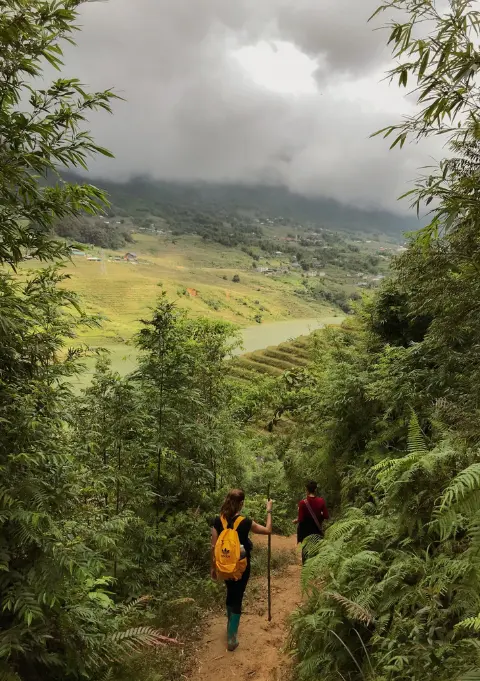
- 3 days 2 night experience
- Moderate to challenging
- Cultural immersion & active adventure
- Mountains, valley, rice fields & villages
- Private tours
- Vegan-friendly
Sapa 4 Day Tours
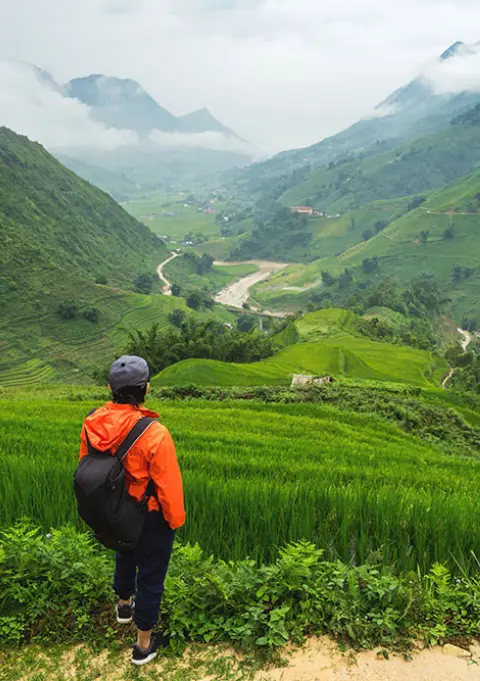
- 4 days 3 night experience
- Moderate to challenging
- Cultural immersion & active adventure
- Mountains, valleys, rice fields & villages
- Private tours – Less Touristic
- Vegan-friendly
In conclusion, when planning your journey from Ho Chi Minh City to Sapa, consider different modes of transportation based on affordability and comfort level. Whether it’s by train or private car hire, don’t forget about the charming cultural experiences and unpredictable weather conditions awaiting you in northern Vietnam!
Cheapest Options
Now that we’ve discussed the different modes of transportation from Ho Chi Minh City to Sapa, let’s talk about traveling tips for those seeking the cheapest options. One way to save money on travel expenses is by taking a budget airline flight into Hanoi and then opting for a public bus or shared taxi service up north. Though it may not be the quickest option, this allows you to experience local life while saving on costs.
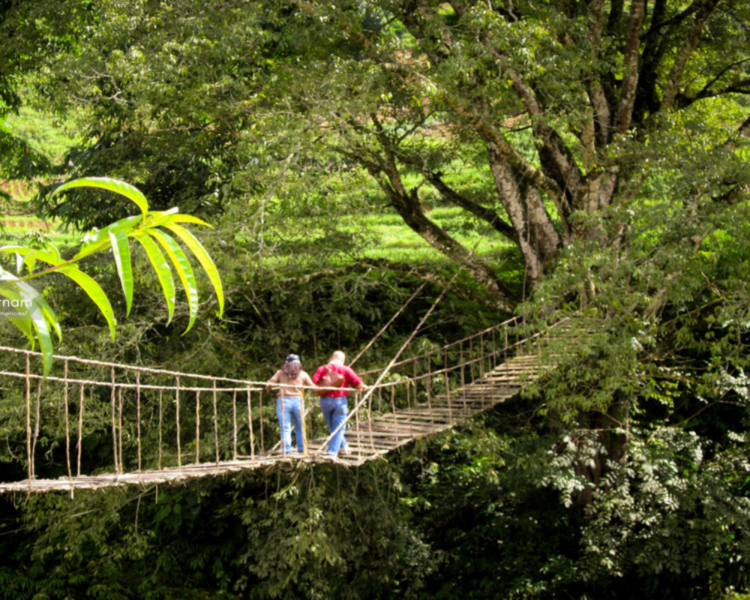
Additionally, consider booking your accommodation in advance as last-minute bookings tend to come with higher price tags. Remember, with some careful planning and flexibility, even those on a tight budget can enjoy the beauty of northern Vietnam!
Cost Of Accommodation
Now that we’ve talked about transportation options and cost-saving tips for traveling from Ho Chi Minh City to Sapa, let’s shift our focus to the cost of accommodation. It’s important to note that while there are plenty of budget-friendly options available in Sapa, prices can fluctuate depending on the time of year and the level of comfort desired. If you’re looking to save money on accommodations, consider booking in advance as last-minute bookings tend to come with higher price tags.
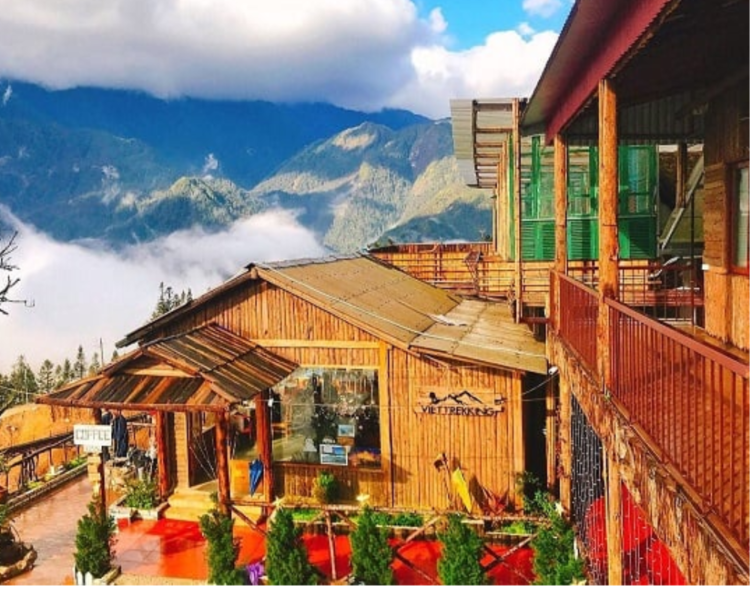
Additionally, opting for homestays or guesthouses instead of hotels can provide a more authentic cultural experience while also being easier on your wallet. While saving money is important, don’t forget to factor in sightseeing opportunities when choosing your accommodations. Staying near popular attractions or markets may be slightly pricier but can save you time and transportation costs in the long run.
By keeping these factors in mind and doing some research beforehand, you’ll be able to find affordable yet comfortable accommodations that allow for an immersive cultural experience during your trip to Sapa.
Time Required For Travel From Hanoi To Sapa
As mentioned in the previous section, traveling from Ho Chi Minh City to Sapa can be quite expensive. However, another factor that travelers should take into consideration when planning their trip is the weather differences and cultural contrasts between these two regions.
Vietnam has a tropical climate with distinct wet and dry seasons, which means that different parts of the country experience varying weather patterns at different times of the year. While Ho Chi Minh City enjoys warm temperatures pretty much all year round, Sapa experiences cool to cold temperatures due to its location on highland terrain.
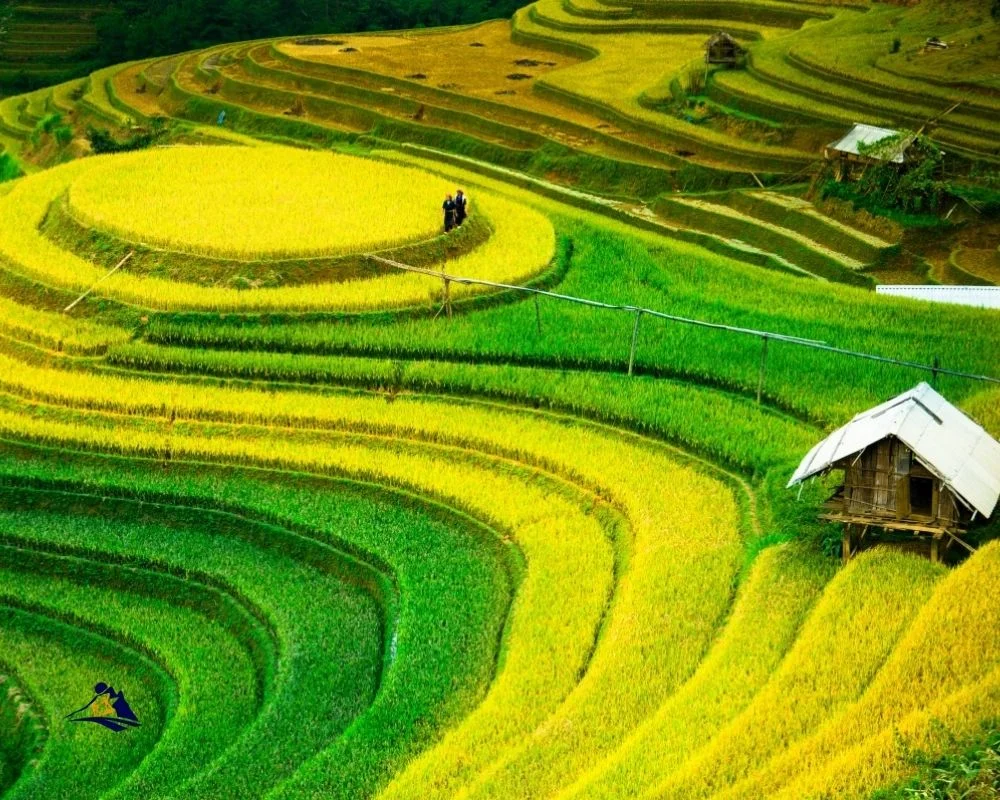
Additionally, there are notable cultural differences between these two locations such as food preferences and traditional clothing styles worn by locals. Travelers need to keep these factors in mind when deciding what time of year they want to visit each destination.
- Weather considerations:
- Ho Chi Minh City: hot and humid throughout most of the year
- Sapa: cooler temperatures especially during winter months (November-February)
- Cultural differences:
- Food: Southern Vietnamese cuisine is known for being sweeter while Northern cuisine tends to be saltier.
- Clothing: Traditional dress includes conical hats in the South versus headscarves or turbans in the North.
Sapa 1 Day Tours

- 1 day experience
- Moderate to challenging
- Cultural immersion & active adventure
- Rice fields, valleys & villages
- Private tours
- Vegan-friendly
Sapa 2 Day Tours

- 2 days 1 night experience
- Moderate to challenging
- Cultural immersion & active adventure
- Mountains, valleys, rice fields and villages
- Private tours
- Vegan-friendly
Sapa 3 Day Tours

- 3 days 2 night experience
- Moderate to challenging
- Cultural immersion & active adventure
- Mountains, valley, rice fields & villages
- Private tours
- Vegan-friendly
Sapa 4 Day Tours

- 4 days 3 night experience
- Moderate to challenging
- Cultural immersion & active adventure
- Mountains, valleys, rice fields & villages
- Private tours – Less Touristic
- Vegan-friendly
Overall, understanding both weather conditions and cultural norms is an essential part of planning any travel itinerary to Vietnam. In the subsequent section, we will delve deeper into how long it takes to travel from Ho Chi Minh City to Sapa so that you can plan accordingly based on your personal schedule constraints.
Time Required For Travel From Ho Chi Minh City To Sapa
Traveling from Ho Chi Minh City to Sapa is an adventure that promises stunning landscapes, cultural differences, and a plethora of unforgettable experiences. The journey takes approximately 31 hours by train or bus, covering over 1,600 km through various terrains and weather conditions.
The first part of the trip involves traveling north towards Hanoi which provides breathtaking views ranging from bustling cities to peaceful rural areas. Along the way, travelers can experience different cultural customs while encountering people from diverse backgrounds who are always willing to share their stories.

As you approach Hanoi, be prepared for cooler temperatures due to its geographical location in the northern region of Vietnam. However, this drop in temperature shouldn’t deter anyone as it adds a refreshing touch to your Sapa-bound journey where even colder weather awaits!
Despite facing potential challenges related to language barriers and transportation logistics, the benefits of traveling from Hanoi to Sapa outweigh any inconveniences encountered along the way. In the next section, we will explore some of these benefits in more detail such as discovering unique hill tribes’ cultures and traditions while savoring local delicacies amidst scenic mountainous landscapes.
Sapa 1 Day Tours

- 1 day experience
- Moderate to challenging
- Cultural immersion & active adventure
- Rice fields, valleys & villages
- Private tours
- Vegan-friendly
Sapa 2 Day Tours

- 2 days 1 night experience
- Moderate to challenging
- Cultural immersion & active adventure
- Mountains, valleys, rice fields and villages
- Private tours
- Vegan-friendly
Sapa 3 Day Tours

- 3 days 2 night experience
- Moderate to challenging
- Cultural immersion & active adventure
- Mountains, valley, rice fields & villages
- Private tours
- Vegan-friendly
Sapa 4 Day Tours

- 4 days 3 night experience
- Moderate to challenging
- Cultural immersion & active adventure
- Mountains, valleys, rice fields & villages
- Private tours – Less Touristic
- Vegan-friendly
Benefits Of Traveling From Hanoi To Sapa
If you’re planning a trip to Sapa, Vietnam, chances are you’ll be flying into Hanoi. Luckily, this distance is not too far, and the journey itself can be quite an adventure. The train ride from Hanoi to Lao Cai (the nearest town to Sapa) offers stunning views of rice paddies and mountains along the way. Once in Lao Cai, it’s just a short drive up to Sapa.

Aside from the natural beauty of the region, there are also plenty of cultural attractions to explore in Sapa. The town is home to several ethnic minority groups who have their unique traditions and customs. Visitors can learn about these cultures through homestays or guided tours.
It’s worth noting that there may be language differences between locals and tourists, but English is spoken by many people in the tourism industry.
Benefits Of Traveling From Ho Chi Minh City To Sapa
Now that we’ve covered the benefits of traveling from Hanoi to Sapa, let’s explore the advantages of making your way from Ho Chi Minh City to this stunning destination. Although it may seem like a long journey, there are plenty of reasons why taking a trip to Sapa is worth it.

One major draw for visitors is the cultural attractions in and around Sapa. From authentic hill tribe villages to bustling markets selling traditional handicrafts, there is no shortage of opportunities to immerse yourself in Vietnamese culture. Additionally, the cooler weather conditions make it an ideal escape from the heat and humidity of southern Vietnam. Whether you’re hiking through lush rice terraces or simply relaxing with a cup of hot tea while admiring the breathtaking views, Sapa offers a unique experience, unlike any other destination in Vietnam.
So if you find yourself craving adventure and a taste of local life, consider venturing northward to discover all that this enchanting town has to offer.
Is Sapa Nearer To Hanoi Or Ho Chi Minh? Frequently Asked Questions
What Is There To Do In Sapa Besides Sightseeing?
For adventurous souls who love exploring nature and immersing themselves in local cultures, Sapa is a must-visit destination. The region offers endless opportunities for hiking, trekking, and camping amidst stunning mountainous landscapes.
One of the most popular activities is visiting local villages to learn about traditional lifestyles and customs. Here, visitors can witness firsthand how indigenous communities have lived harmoniously with their environment for generations.
From admiring picturesque rice terraces to discovering hidden waterfalls, Sapa promises an unforgettable experience that connects you to Vietnam’s natural beauty and rich cultural heritage.
So pack your bags, grab your camera, and get ready to embark on an adventure of a lifetime!
Are There Any Cultural Customs Or Traditions To Be Aware Of When Visiting Sapa?
When planning a trip to Sapa, it’s important to not only consider the natural beauty of the area but also its rich cultural traditions.
Visitors should be aware of local festivals and customs, such as wearing traditional clothing during celebrations or respecting certain taboos.
For instance, during Lunar New Year (Tet), locals wear red clothing for good luck and avoid sweeping the floor on the first day of the year so they don’t sweep away their wealth.
It’s these unique customs that make Sapa a fascinating destination beyond just sightseeing. So if you’re looking to experience something new and dive deeper into Vietnam’s culture, Sapa is worth adding to your travel itinerary!
Is It Safe For Solo Travelers To Visit Sapa?
Attention solo travelers! Before you pack your bags and head to Sapa, there are a few things you should know.
First off, let’s talk safety. While Sapa is generally safe for solo travelers, it’s important to take precautions like avoiding dark alleys at night and keeping an eye on your belongings in crowded areas.
Now that we have the health concerns out of the way, let’s move on to socializing tips. Don’t be afraid to strike up a conversation with locals or fellow travelers – Sapa is full of friendly people willing to share their stories over a cup of tea.
And if you’re feeling adventurous, sign up for a trekking tour where you’ll meet other like-minded individuals while exploring the stunning scenery.
So go ahead and book that ticket to Sapa – adventure awaits!
What Is The Climate Like In Sapa Throughout The Year?
Sapa, a picturesque town in Vietnam’s northwest highlands, is known for its stunningly beautiful landscapes and unique culture.
But before packing your bags, it’s essential to know what the climate is like throughout the year. Sapa has a subtropical climate with four distinct seasons.
The best time to visit is from March to May or September to November when the weather is mild and dry. During these months, you can take advantage of the numerous hiking trails that wind through rice paddies, bamboo forests, and waterfalls.
And while you’re exploring the great outdoors, be sure to sample some of Sapa’s delicious local cuisine. From hearty stews made with fresh vegetables and meats to steaming bowls of pho served up by street vendors – there’s something on every corner sure to please any palate!
Are There Any Recommended Accommodations Or Restaurants In Sapa?
If you’re planning a trip to Sapa, Vietnam, there are plenty of great accommodations and restaurants to choose from.
For hikers, we recommend checking out the many hiking trails in the area for some stunning views of the surrounding mountains and valleys.
And when it comes to dining, be sure to sample the local cuisine – with its unique blend of Vietnamese and Chinese influences, it’s truly something special.
Whether you’re looking for adventure or relaxation, Sapa has something for everyone.
So why not book your trip today and experience all this beautiful region has to offer?
Conclusion
In conclusion, Sapa is a must-visit destination for anyone traveling to Vietnam. Whether you’re coming from Hanoi or Ho Chi Minh City, the journey will be worth it. With its stunning natural beauty and rich cultural traditions, there’s plenty to see and do in this charming mountain town.
Besides sightseeing, visitors can also enjoy trekking through the rice paddies or visiting local markets to purchase handmade crafts and textiles. It’s important to respect the customs of the ethnic minority groups that call Sapa home, such as dressing modestly and asking permission before taking photos.
As for safety concerns, solo travelers need not worry as Sapa is generally considered safe. However, it’s always a good idea to take basic precautions like keeping your valuables secure. Finally, when planning your trip to Sapa, be aware of the climate throughout the year. The best time to visit is between September and November when temperatures are cooler and drier. And with a wide range of accommodations and restaurants available in town, finding a place to stay or eat won’t be an issue.
Overall, Sapa offers a unique travel experience that combines breathtaking scenery with a fascinating culture. So don’t hesitate – add it to your bucket list today!
Sapa 1 Day Tours

- 1 day experience
- Moderate to challenging
- Cultural immersion & active adventure
- Rice fields, valleys & villages
- Private tours
- Vegan-friendly
Sapa 2 Day Tours

- 2 days 1 night experience
- Moderate to challenging
- Cultural immersion & active adventure
- Mountains, valleys, rice fields and villages
- Private tours
- Vegan-friendly
Sapa 3 Day Tours

- 3 days 2 night experience
- Moderate to challenging
- Cultural immersion & active adventure
- Mountains, valley, rice fields & villages
- Private tours
- Vegan-friendly
Sapa 4 Day Tours

- 4 days 3 night experience
- Moderate to challenging
- Cultural immersion & active adventure
- Mountains, valleys, rice fields & villages
- Private tours – Less Touristic
- Vegan-friendly
